Mercury Seven: The story of the first Americans to go to space
13th May 2022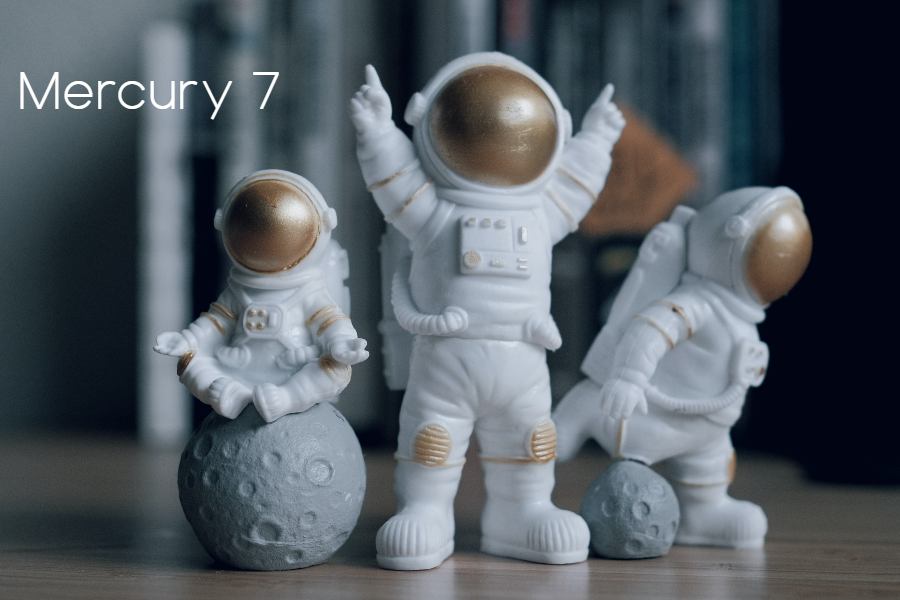
The Soviet launch of the first satellite, Sputnik 1, in 1957 came as a shock to the American public and led to the creation of NASA to accelerate the current US space exploration efforts, which included, among other things, Mercury astronauts’ training. The Americans launched their own Explorer 1 satellite a little less than a year later, but the Soviets were already in full swing developing their first manned Vostok spacecraft, and the USA needed to respond with something.
This is how Mercury came to life – the first US manned space programme, which lasted from 1958 to 1963. On 9th April 1959, NASA released the names of 7 original astronauts selected to participate in Mercury space missions. Those were Virgil Grissom, Alan Shepard, Scott Carpenter, Walter Schirra, John Glenn, Gordon Cooper and Donald Slayton. In this article, we will tell the full story of the Mercury 7 and the first NASA astronauts.
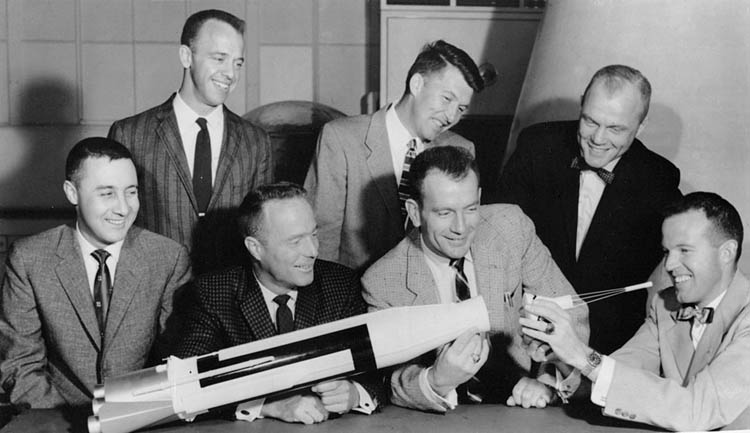
What did the first American spacecraft look like?
Mercury was a single-seat orbital manned spacecraft made in the form of a conical capsule with a spherical bottom. The design of the ship was proposed by the aerodynamic engineer Max Faget and was chosen as the most viable for rapid implementation. At the same time, it was significantly inferior to the Soviet spheric-shaped Vostok, both in size and in technical equipment.
The total height of the Mercury capsule was 2.92 m, together with the brake propulsion system – 3.33 m; and the cabin volume was truly tiny – 1.7 m3. The astronaut was located in the lodgement and was in a spacesuit during the whole flight. Piloting and control were carried out using 120 electrical and mechanical switches. A visual overview was provided by a porthole on the entrance hatch of the cockpit and a panoramic wide-angle periscope with variable magnification.
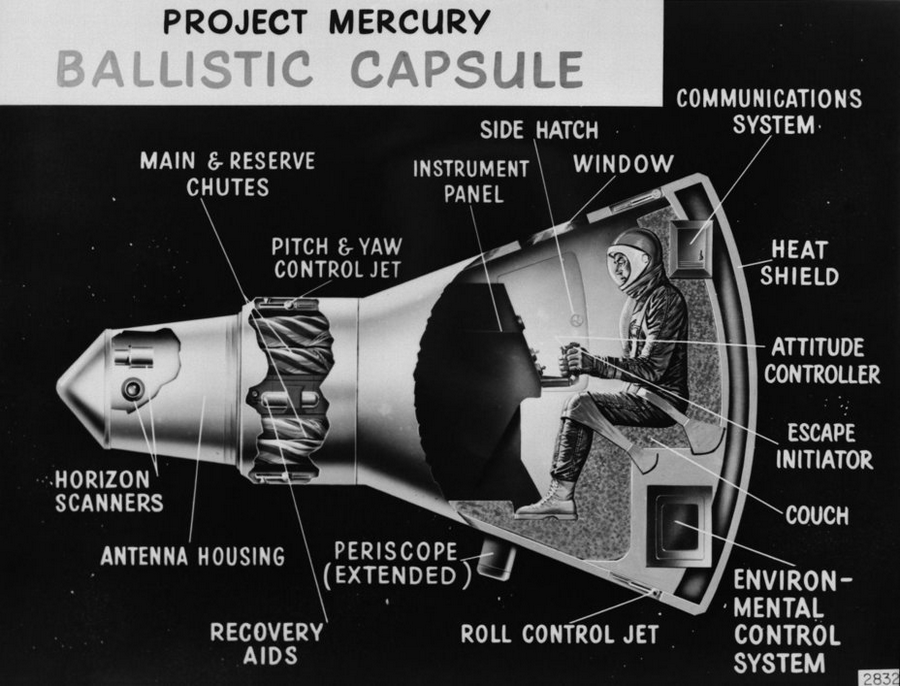
By the way, in addition to the cramped cabin, the lack of a sewage device was an equally serious problem for the Mercury astronauts. Since the duration of the suborbital flight was assumed to be no more than 15 minutes, there was no need for sewage. However, the astronauts had to sit in the ship for hours waiting for the launch, so it was decided to equip them with special diapers. But how did mercury astronauts go to the bathroom during orbital missions, which could last up to 2 days? In the orbital version of Mercury, a urinal was installed, and the astronauts were transferred to a special diet a few days before the flight, eliminating the need for more serious necessities.
What guided Faget in creating such an uncomfortable ship?
Since the Atlas D and Redstone launch vehicles the USA had at that time were three times inferior in terms of payload capacity compared to the Soviet R-7 (1.5 tons vs 5 tons), Faget was forced to downsize on the vehicle mass. And here, the conical shape and compact dimensions played a key role.
First, in a conical capsule, with the correct descent into the atmosphere, only the bottom heated up significantly. So, it was possible to save on the heat-insulating layer of the rest of the coating by using conventional heat-resistant materials.
Second, the conical shape fits well into the aerodynamics of the rocket head, eliminating the need for a fairing. And finally, Mercury astronauts splashed down in the cockpit of the descent vehicle and did not eject during landing, as in the Vostok spacecraft. So, the solid propellant brake engine made it possible to take a much greater part in piloting the spacecraft than on the Vostok.
Mercury astronauts’ selection and training
The first American astronaut spaceflight program demanded the most careful and error-free implementation. Losing to the Soviets once again was categorically unacceptable. Therefore, Mercury astronauts had the highest selection criteria:
- Age from 25 to 40 years.
- Height less than 5’11” (due to limited cabin size).
- Weight no more than 82 kg.
- Excellent physical and mental health.
- Bachelor’s degree in STEM or equivalent.
- Graduate of the test pilot school.
- Senior military or command personnel.
- Total flight experience of at least 1500 hours.
- Qualified jet pilot.
Of the 508 candidates, 110 were selected for an interview, and only 32 were admitted to further physical and psychological testing. Candidates passed tests for physical health, vision and hearing, resistance to noise, vibration, overload, heat, and personal isolation. They were tested in special chambers to see how ready they were to perform tasks in difficult and extreme conditions. And for a mental health test, they were asked to answer more than 500 questions about themselves and describe what they saw in the pictures.
Ultimately, seven candidates were selected:
- Navy Lieutenant Scott Carpenter,
- Air Force Captain Gordon Cooper,
- Marine Lieutenant Colonel John Glenn,
- Air Force Captain Virgil Gus Grissom,
- Navy Lieutenant Commander Wally Schirra,
- Navy Lieutenant Commander Alan Shepard,
- Air Force Captain Deke Slayton.
After that, a period of training began, which took over three years. How and where did the Mercury astronauts train? The process included the following stages:
- lectures on astronomy, rocket engines, flight operation and Mercury systems,
- simulation of G-forces during launch and re-entry in a centrifuge at the Naval Aviation Development Center and the development of special breathing techniques to endure g-forces greater than 6 g;
- testing in artificial weightlessness in jets and a converted cargo aircraft;
- piloting skills using the Multi-Axis Inertial Rotational Test Facility (MASTIF) at the Lewis Flight Engine Laboratory;
- determining the position in orbit by the stars in planetariums and on special simulators;
- communication sessions with the Mission Control Center and other flight procedures on flight simulators;
- splashdown and further evacuation operations, first in the pools at Langley and then at sea with divers and helicopter crews.
In March 1959, NASA drew up a plan that included eight suborbital launches of Mercury on a Redstone rocket, one suborbital launch, and eight orbital launches on Atlas rockets. However, if the first NASA astronaut training was successful, the technical side of the Mercury project lagged behind.
First Mercury space missions problems
The first unmanned test flights revealed the shortcomings of the Redstone and Atlas launch vehicles. Mercury-Atlas 1 only managed to launch on 29th July 29 1960, but the launch ended in an accident and the loss of the ship. And at the second launch, the Redstone rocket could not break away from the launch pad at all. Only the third Mercury-Redstone 1A mission on 19th December was successful, and even then only partially, since the rocket showed results that differed from the estimated ones.
The Soviet manned Vostok program was completely classified, which created a certain nervousness and required NASA to accelerate its progress. However, a series of technical failures made it necessary to postpone the first manned astronaut flights and try flying animals instead.
On 31st January 1961, chimpanzee Ham went on a suborbital flight instead of a Mercury astronaut. The launch was successful; however, due to a valve sticking in the engine, the ship’s speed during descent exceeded the calculated one, changed the angle of entry into the atmosphere, and the ship flew over the splashdown site by 212 km. Upon impact with the water, the beryllium heat shield was torn off, and it punched two holes in the titanium sealed shell; then, the capsule began to sink. But fortunately, it was quickly discovered, and Ham was saved.
The USA still had a chance to get ahead of its Soviet competitors and become the first country to send a man into space, but Wernher von Braun, the one who invented the V-2 rocket, which became the prototype of all launch vehicles worldwide, prevented this. After Ham’s flight, he insisted on making another modification of the Redstone rocket and carrying out another test launch to confirm the technical viability of the process. This launch took place on 24th March 1961, and proceeded normally, giving NASA the green light for its first manned astronaut flight.
In early April 1961, the Mercury spacecraft and Redstone No. 7 rocket were delivered to Cape Canaveral and installed at Launch Complex No. 5. Alan Shepard and his stunt double John Glenn began preparations for the flight. On 12th April the Soviets again dealt a powerful blow to the American ego by sending Yuri Gagarin on the first-ever orbital flight.
However, Soviet leadership did not last long, and over the next ten years, the USA was able to completely turn the tide of confrontation in its favour. You can read more about this in our article The Human Space Exploration Timeline.
What order did the Mercury astronauts fly?
The table below shows all Mercury manned astronaut missions.
|
Mission |
Call- sign |
Pilot |
Launch |
Duration of flight |
Orbits |
|
|
Date and time |
Cape Canaveral site |
|||||
|
MR-3 |
Freedom 7 |
Shepard |
14:34 on May 5, 1961 |
LC-5 |
15 m 22 s |
0 |
|
MR-4 |
Liberty Bell 7 |
Grissom |
12:20 on Jul. 21, 1961 |
LC-5 |
15 m 37 s |
0 |
|
MA-6 |
Friendship 7 |
Glenn |
14:47 on Feb. 20, 1962 |
LC-14 |
4 h 55 m 23 s |
3 |
|
MA-7 |
Aurora 7 |
Carpenter |
12:45 on May 24, 1962 |
LC-14 |
4 h 56 m 5 s |
3 |
|
MA-8 |
Sigma 7 |
Schirra |
12:15 on Oct. 3, 1962 |
LC-14 |
9 h 13 m 15 s |
6 |
|
MA-9 |
Faith 7 |
Cooper |
13:04 on May 15, 1963 |
LC-14 |
1 d 10 h 19 m 49 s |
22 |
As you can see, there are 6 of them, although there were 7 astronauts. Donald Slayton never flew on Mercury. On 15th March 1962, he was suspended from flying due to heart problems. On 24th May 1962, Scott Carpenter went into space instead. However, Slayton did not give up trying. He restored his health and got another permission to fly in 1972. In three years, he went down in history as a member of the legendary joint USA and USSR Apollo-Soyuz mission. Notably, he became the oldest astronaut to fly into space at the age of 51 years. So, what happened to the mercury astronauts later?
How many Mercury astronauts went to the Moon?
Besides Slayton, four more Mercury astronauts took part in subsequent US manned space programmes – Gemini and Apollo. Gordon Cooper, Gus Grissom and Walter Schirra were crew commanders on Gemini 3 (Grissom), Gemini 5 (Cooper) and Gemini 6A (Schirra) missions. Schirra was also an astronaut on the first Moon mission, Apollo 7, to test the Apollo spacecraft in orbit. Slayton finished the Apollo programme with the Apollo 21 docking with the Soyuz 19 But how many Mercury astronauts walked on the Moon? Only one.
Alan Shepard became not only the first American astronaut in space but also the fifth person to set foot on the surface of the Moon. It was the Apollo 14 mission on 5th February 1971, which lasted 33 hours and was the third astronaut landing on the Moon.
Mercury legacy
The Mercury ships failed to surpass the Soviet Vostok and become the first vehicles to deliver a man into space. But it was the first astronaut space program, laying the groundwork for future missions and playing an important role in the US’s soon-to-follow leadership in space.
60 years have passed since then, and you may ask how many Mercury astronauts are still alive? Nobody, unfortunately. Dike Slayton was the first one to leave this world. He died in 1993, at age 69, from a brain tumour. John Glenn lived longer than any other Mercury astronaut. He died in 2014 at the age of 95.
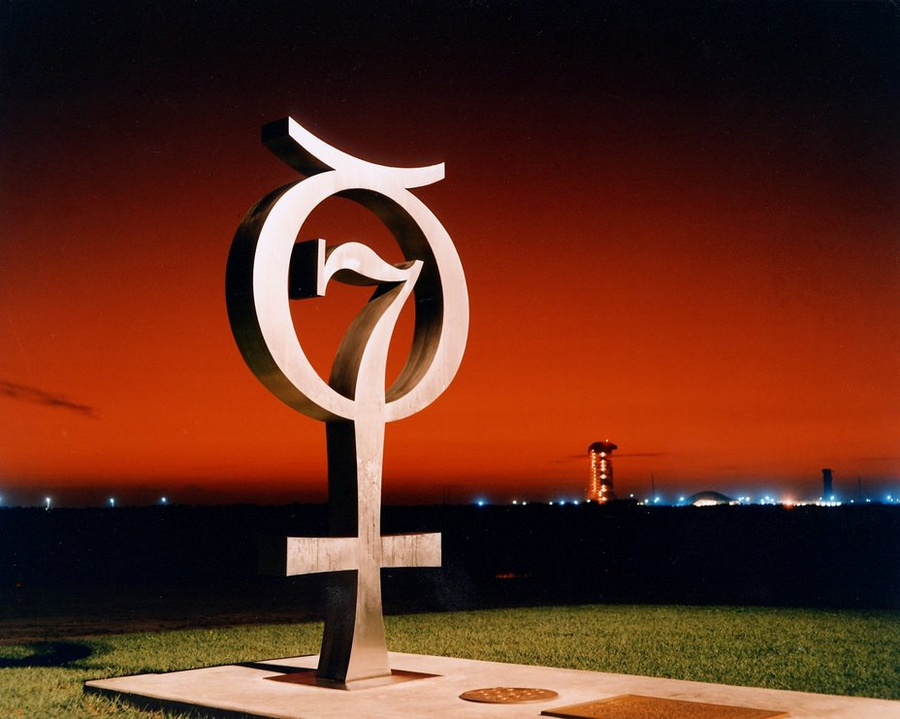
During their lifetime, all Mercury 7 participants were awarded medals, and in 1964, a monument was unveiled next to the LC-14 at Cape Canaveral with a metal logo combining the Mercury symbol with the number 7. The history of Mercury 7 inspired the famous American journalist and writer Tom Wolfe to write The Right Stuff novel. In 1983, a space movie of the same name was made based on this book, which became a hit at the box office. It featured such famous Hollywood actors as Fred Ward (Virgil Grissom), Dennis Quaid (Gordon Cooper), Ed Harris (John Glenn), Scott Glenn (Alan Shepard), Lance Henriksen (Walter Schirra), and others.
The names of Mercury astronauts are also given to launch vehicles. In 2012, private aerospace company Blue Origin, owned by billionaire Jeff Bezos, launched its first suborbital rocket New Shepard, named after Alan Shepard. The company is also developing the New Glenn heavy orbital launch vehicle, named after John Glenn. So, the legacy of the first seven Mercury astronauts and all Mercury space missions lives on.
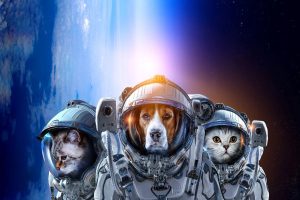

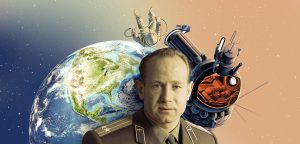

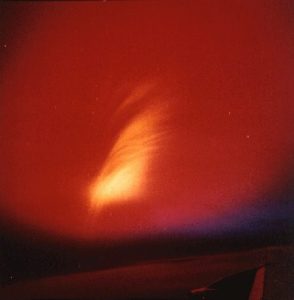

Thank you for your comment! It will be visible on the site after moderation.